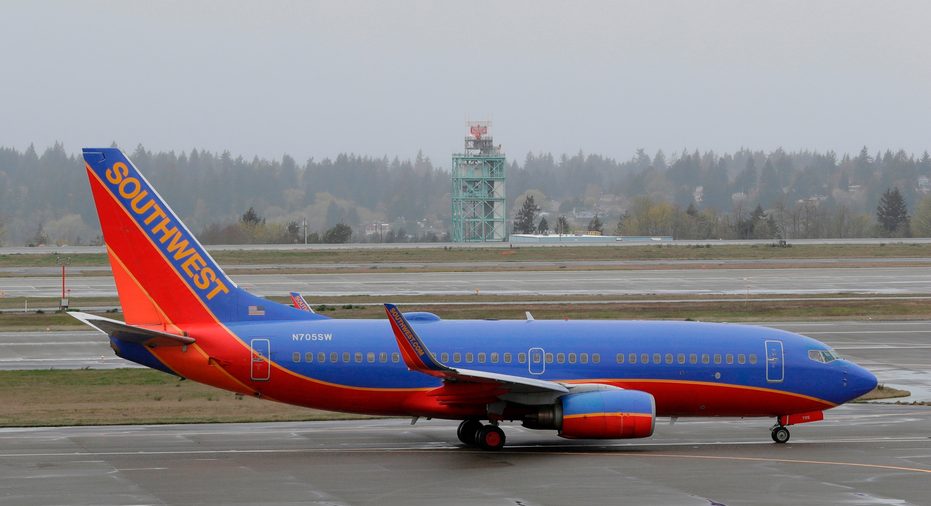Bookings for Southwest fall after fatal accident

DALLAS – Inspections of jet engines at Southwest Airlines turned up one cracked fan blade last year but no others since last week's deadly accident that investigators believe started when a weakened blade broke off during flight.
Southwest executives said Thursday that they have checked more than 25,000 fan blades since 2016 for signs of metal fatigue and the remaining 10,000 will be inspected by mid-May.
They also said that bookings have dropped since the April 17 accident and will cost Southwest between $50 million and $100 million.
Last-minute trips fell, but so did bookings into May. Southwest canceled some flights to send planes for inspections, and it stopped advertising on television and social media. President Tom Nealon said the airline's advertising "has a lot of fun, and we just don't think it's appropriate yet to bring that back."
Southwest disclosed the results of engine inspections and the downturn in bookings as it reported a 22 percent increase in first-quarter profit, to $463 million. The results were in line with Wall Street expectations.
On a conference call with analysts and reporters, the financial figures were overshadowed by the emergency landing of one of Southwest's planes last week in Philadelphia after an engine blew apart, knocked out a window, and killed Jennifer Riordan, a bank executive and mother of two from Albuquerque, New Mexico. It was the first accident-related death of a passenger in the airline's 47-year history.
"It was a dark day," CEO Gary Kelly said at the beginning of the call. He called Riordan "an extraordinary person" and credited the actions of the crew and other passengers during the emergency.
Southwest has 35,500 fan blades for its fleet of more than 700 Boeing 737 jets. After a fan blade broke off and triggered an engine breakup in August 2016, the airline started inspecting other engines as engine manufacturer CFM International recommended, said Chief Operating Officer Mike Van de Ven. Those checks turned up one bad blade in May 2017, and it was discarded, he said.
Since last week's accident, 8,500 more blades have been checked and none was found to show signs of metal fatigue, or microscopic cracks, Van de Ven said.
Kelly said Southwest never considered grounding any of its planes because it was following inspection recommendations from the engine manufacturer. Van de Ven added that metal fatigue in the widely used CFM fan blades was seen as extremely rare.
Analysts believe that any loss in bookings because of the accident will be temporary. JP Morgan's Jamie Baker said no other airline has reported gaining at Southwest's expense — although he noted it would be poor etiquette for other carriers to do so — and that any booking away from Southwest will be short-term.
The airline also announced that it plans to fly to four cities in Hawaii, not just Honolulu. That decision raises the stakes in a looming competition with Hawaiian Airlines and other carriers that fly to the islands from the West Coast. The Southwest flights are expected to start late this year or early in 2019.
Southwest also said it will lease coveted takeoff and landing slots at LaGuardia Airport in New York and Washington Reagan National Airport just outside the nation's capital from Alaska Airlines, allowing it to expand at two airports that are essentially full.
Lower income taxes helped Southwest overcome cheaper average fares and higher fuel and labor costs in the January-through-March quarter. Taxes dropped 28 percent from a year ago, saving the Dallas-based airline $54 million.
Excluding items such as fuel-hedging contracts, Southwest said it would have earned 75 cents per share, matching the forecast of analysts surveyed by Zacks Investment Research.
Revenue rose 2 percent to $4.94 billion. That was a Southwest record for the first quarter, but it fell short of the $5.02 billion that analysts in the Zacks survey had expected.
Southwest boosted revenue despite a drop of nearly 5 percent in the average one-way fare, to $146.33 — reflecting slightly short trips and competition on key routes. However, the airline carried 6 percent more passengers, and the average flight was fuller — 81.5 percent of seats were sold, compared with 79.9 percent a year earlier.
Labor costs roses 5 percent and fuel costs grew 6 percent.
Southwest shares were down 51 cents to $53.32 in afternoon trading.
___
David Koenig can be reached at http://twitter.com/airlinewriter



















